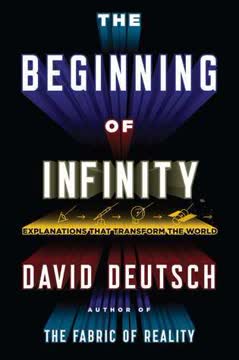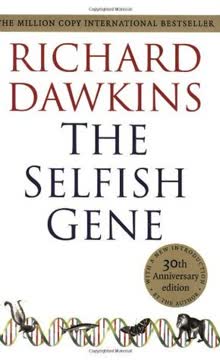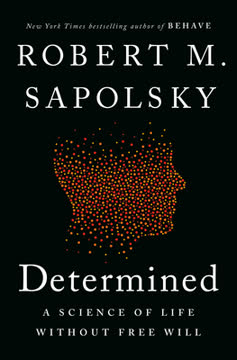Key Takeaways
1. Human thinking evolved through cooperation and shared intentionality
Human thinking is individual improvisation enmeshed in a sociocultural matrix.
Evolutionary perspective: The shared intentionality hypothesis proposes that human thinking evolved in response to the need for social coordination. This process occurred in two key steps:
- Joint intentionality: Early humans developed the ability to form joint goals and shared attention with specific partners.
- Collective intentionality: Modern humans created group-wide conventions, norms, and institutions.
These adaptations led to new forms of cognitive representation, inference, and self-monitoring, transforming ape-like individual intentionality into uniquely human ways of thinking. The evolution of human cognition is thus inseparable from the evolution of human sociality and cooperation.
2. Great apes possess sophisticated individual cognition and social understanding
Great ape cognition and thinking are adapted to this social, but not very cooperative, way of life.
Individual intentionality: Great apes demonstrate advanced cognitive abilities in three key areas:
- Cognitive representation: They use imagistic and schematic models to understand their environment.
- Causal and intentional inferences: Apes can make logical inferences about physical and social events.
- Behavioral self-monitoring: They evaluate their own decision-making processes.
However, great ape cognition is primarily adapted for competition rather than cooperation. They understand others as intentional agents but do not engage in shared intentionality or cooperative communication in the way humans do.
3. Early humans developed joint intentionality for collaborative activities
Early humans' joint intentionality and second-personal thinking represented a radical break, a new type of relation between sociality and thinking.
Collaborative problem-solving: Joint intentionality emerged as early humans faced new ecological challenges that required cooperation for survival. This led to:
- Formation of joint goals with individual roles
- Development of joint attention with individual perspectives
- Creation of a dual-level structure of simultaneous sharing and individuality
These adaptations allowed early humans to coordinate their actions and attention more effectively, leading to new forms of collaborative problem-solving and social interaction. This "second-personal" engagement laid the foundation for more complex forms of human sociality and cognition.
4. Cooperative communication emerged to coordinate actions and perspectives
Humans, but not other primates, thus collaborate in their communication to make it easier for the other to take their perspective and even to manipulate it if they so desire.
Gestural communication: Early humans developed new forms of cooperative communication, primarily through pointing and pantomiming. This required:
- Taking the perspective of others
- Making socially recursive inferences
- Engaging in social self-monitoring
Cooperative communication allowed early humans to coordinate their actions and share information more effectively. It also led to new cognitive abilities, such as the capacity for symbolic representation and the ability to reason about others' mental states.
5. Modern humans created collective intentionality through cultural practices
Modern humans did not start from scratch but started from early human cooperation.
Group-mindedness: The transition to modern human cognition involved:
- Development of group identity and cultural common ground
- Creation of conventional cultural practices and norms
- Emergence of social institutions with collectively accepted roles and statuses
This collective intentionality allowed humans to coordinate with strangers and create large-scale societies. It also led to the development of "objective" perspectives and normative thinking, as individuals internalized the group's standards and expectations.
6. Conventional language enabled new forms of reasoning and reflection
Conventional linguistic communication provided developing children with a preexisting representational system of alternative means of conceptualization, and everyone knew together in cultural common ground the available alternatives.
Linguistic innovations: The development of conventional language brought several key cognitive advancements:
- Creation of abstract linguistic constructions and propositional content
- Ability to express complex ideas, including mental states and logical operations
- Development of formal and pragmatic inferences
- Facilitation of reflective thinking and internal dialogue
Language allowed humans to communicate more complex ideas and engage in new forms of reasoning. It also provided a shared representational system that could be used for both communication and individual thought.
7. Human thinking is fundamentally shaped by social and cultural interactions
Humans biologically inherit their basic capacities for constructing uniquely human cognitive representations, forms of inference, and self-monitoring, from out of their collaborative and communicative interactions with other social beings.
Social cognition: The development of human thinking is deeply intertwined with social and cultural experiences:
- Cognitive skills emerge through collaborative activities and communication
- Cultural practices and artifacts scaffold individual learning and development
- Social interactions shape the way individuals represent and reason about the world
This perspective emphasizes that human cognition is not simply a product of individual brain development, but is fundamentally shaped by social and cultural interactions throughout life.
8. Objective and normative thinking arose from group-minded perspectives
Human reasoning, even when it is done internally with the self, is therefore shot through and through with a kind of collective normativity in which the individual regulates her actions and thinking based on the group's normative conventions and standards.
Normative self-governance: The emergence of objective and normative thinking involved:
- Development of agent-neutral, "objective" perspectives
- Internalization of social norms and group standards
- Creation of shared criteria for rationality and truth
This process allowed humans to reason about abstract concepts and engage in complex forms of argumentation and decision-making. It also led to the development of cultural institutions like science, law, and philosophy.
9. Ontogeny plays a crucial role in the development of human cognition
Absent a social environment, these capacities would wither away from disuse, like the capacity for vision in a person born and raised completely in darkness.
Developmental perspective: The ontogenetic development of human cognition involves:
- Interaction with caregivers and peers from early infancy
- Exposure to cultural artifacts, practices, and language
- Gradual internalization of social and cultural norms
This developmental process is crucial for the emergence of uniquely human cognitive abilities. Without appropriate social and cultural input during development, individuals would not develop the full range of human cognitive capacities, highlighting the essential role of social interaction in human cognition.
Last updated:
FAQ
1. What is A Natural History of Human Thinking by Michael Tomasello about?
- Exploration of Human Cognition: The book investigates what makes human thinking unique, focusing on the evolutionary and developmental roots of our cognitive abilities.
- Social Cooperation as Key: Tomasello argues that human thinking evolved primarily through social cooperation, distinguishing us from other primates.
- Two-Step Evolutionary Process: The narrative centers on the emergence of joint intentionality and collective intentionality as the two major evolutionary steps that transformed primate cognition into complex, culturally embedded human reasoning.
- Integration of Multiple Perspectives: The book combines evolutionary theory, developmental psychology, and comparative studies with great apes to explain the origins of human cognition.
2. Why should I read A Natural History of Human Thinking by Michael Tomasello?
- Comprehensive Evolutionary Account: Tomasello provides a detailed, evidence-based explanation of how human thinking evolved, filling a gap in our understanding of human uniqueness.
- Interdisciplinary Insights: The book bridges psychology, anthropology, linguistics, philosophy, and evolutionary biology, offering a rich, multifaceted view of cognition.
- Clarifies Complex Concepts: Key ideas like joint intentionality, collective intentionality, and normative self-governance are explained clearly, making the book accessible to a broad audience.
- Challenges Common Assumptions: Tomasello’s arguments challenge simplistic views of intelligence and highlight the centrality of social cooperation in cognitive evolution.
3. What are the key takeaways from A Natural History of Human Thinking by Michael Tomasello?
- Cooperation as Cognitive Foundation: Human cognition is deeply rooted in cooperative sociality, with shared intentionality shaping the evolution of thinking, communication, and culture.
- Two-Step Evolutionary Model: The transition from individual intentionality to joint, and then collective intentionality, explains the emergence of uniquely human cognitive abilities.
- Culture and Norms as Integral: Culture and social norms are not just external influences but are integral to the structure of human thinking, enabling objectivity, reflection, and norm-governed reasoning.
- Language as a Capstone: Language and conventional communication are seen as products of earlier adaptations for shared intentionality, not the starting point of human cognition.
4. How does Michael Tomasello define and explain "shared intentionality" in A Natural History of Human Thinking?
- Core Hypothesis: Shared intentionality is the capacity to form joint goals, share attention, and coordinate actions and intentions with others, creating a "we" perspective.
- Evolutionary Steps: Tomasello distinguishes between joint intentionality (dyadic collaboration) and collective intentionality (group-mindedness), both of which are unique to humans.
- Cognitive Transformation: These adaptations enable perspectival thinking, recursive inference about others’ mental states, and normative self-monitoring.
- Foundation for Culture: Shared intentionality underpins the development of language, culture, and social norms.
5. What are "joint intentionality" and "collective intentionality" in Tomasello’s theory, and how do they differ?
- Joint Intentionality: This is the ability to form joint goals and coordinate roles with specific partners, involving second-personal engagement and recursive perspective-taking.
- Collective Intentionality: This involves group-mindedness, where social norms, conventions, and institutions are collectively created and enforced, enabling coordination with large groups and strangers.
- Key Differences: Joint intentionality is dyadic and second-personal ("I-you"), while collective intentionality is agent-neutral and applies to "anyone" in the group.
- Cognitive and Social Impact: Joint intentionality fosters collaboration and symbolic representation; collective intentionality leads to objective, normative, and institutional thinking.
6. How does Tomasello contrast human thinking with great ape cognition in A Natural History of Human Thinking?
- Great Ape Cognition: Apes possess individual intentionality, flexible problem-solving, and some social cognition, but their sociality is mainly competitive.
- Human Joint Intentionality: Humans evolved the ability to form joint goals, share attention, and engage in cooperative communication, which apes lack.
- Collective Intentionality and Culture: Only humans developed group-mindedness, social norms, and institutions, enabling large-scale cooperation and objective reasoning.
- Qualitative Shift: These evolutionary steps represent a qualitative transformation in cognition, not just a quantitative increase in intelligence.
7. What are the three key components of thinking according to Tomasello’s framework in A Natural History of Human Thinking?
- Cognitive Representation: The ability to create abstract, off-line models of situations, including representing multiple perspectives simultaneously.
- Simulation and Inference: The capacity to simulate potential actions and outcomes, making causal, intentional, and logical inferences, especially about others’ mental states.
- Self-Monitoring: The ability to evaluate and regulate one’s own thinking and behavior, anticipating others’ evaluations and introducing normative self-governance.
8. How does A Natural History of Human Thinking explain the emergence of conventional communication and language?
- From Gestures to Conventions: Early humans used natural, iconic gestures for coordination, which evolved into conventionalized, normatively enforced linguistic signs.
- Cultural Common Ground: Communication became explicit and obligatory within groups, relying on shared cultural knowledge and expectations.
- Arbitrariness and Abstraction: Over time, gestures became stylized and arbitrary, allowing for abstract and flexible conceptualization.
- Linguistic Constructions: Complex linguistic patterns emerged, enabling creative conceptual combination and the framing of experiences in conventional ways.
9. What role do social norms and institutions play in human thinking according to Michael Tomasello?
- Social Norms as Standards: Norms are agent-neutral standards that regulate behavior based on collective evaluations, enforced by group members.
- Normative Self-Monitoring: Humans internalize norms, leading to self-regulation and concern for public reputation, even when personal preferences differ.
- Institutions as Constitutive Norms: Institutions create new social realities by establishing roles and powers through collective agreement and symbolic marking.
- Objective Social Facts: Institutional facts are objective yet observer-relative, existing because of collective intentionality and normative enforcement.
10. How does Tomasello describe the development of reflective thinking and reasoning in humans in A Natural History of Human Thinking?
- Discourse and Explicitation: Language allows individuals to make implicit thoughts explicit, enabling self-reflection and perspective-taking.
- Reason-Giving Practices: Shared decision-making requires providing reasons and justifications, fostering cooperative argumentation and logical consistency.
- Internalization of Social Reasoning: Social processes of giving and evaluating reasons become internalized as individual reasoning, creating a web of beliefs governed by community standards.
- Normative Governance: Reflective reasoning is shaped by social norms and collective intentionality, ensuring rational discourse and self-monitoring.
11. What is agent-neutral thinking in Tomasello’s theory, and how does it relate to objectivity?
- Agent-Neutral Perspective: Modern humans adopt a generic viewpoint that applies norms and conventions impartially to any group member, not just specific individuals.
- Objectivity as Social Construct: Objectivity arises from group-mindedness, generalizing perspectives into a sense of external reality through collective agreement.
- Role of Language and Institutions: Language and institutions reinforce objectivity by making norms and facts explicit and public.
- Cognitive Consequences: Agent-neutral thinking enables conventional, propositional representations and transforms cognition from individual to collective frameworks.
12. What is the role of ontogeny (development) in the emergence of uniquely human thinking according to A Natural History of Human Thinking?
- Developmental Sequence: Children first develop joint intentionality skills (joint attention, joint goals) around their first year, followed by collective intentionality (understanding norms, conventions) around age three.
- Necessity of Social Environment: Rich social and cultural interaction is essential for developing these cognitive adaptations; isolation prevents their emergence.
- Biological and Cultural Interaction: Shared intentionality is a biological adaptation that requires cultural nourishment and extended human ontogeny for full development.
- Mirroring Evolutionary History: The ontogenetic sequence in children reflects the evolutionary steps outlined in Tomasello’s theory.
Review Summary
A Natural History of Human Thinking presents Tomasello's theory that human cognition evolved through cooperative social interactions, developing from individual to joint to collective intentionality. Readers found the book's ideas compelling and well-supported by experimental evidence, particularly comparisons between apes and human children. Many praised Tomasello's interdisciplinary approach, drawing on psychology, anthropology, and philosophy. However, some criticized the dense academic writing style and repetitiveness. Overall, reviewers considered it an important, thought-provoking work on the origins of human cognition, despite its challenging nature.
Similar Books
Download PDF
Download EPUB
.epub digital book format is ideal for reading ebooks on phones, tablets, and e-readers.















